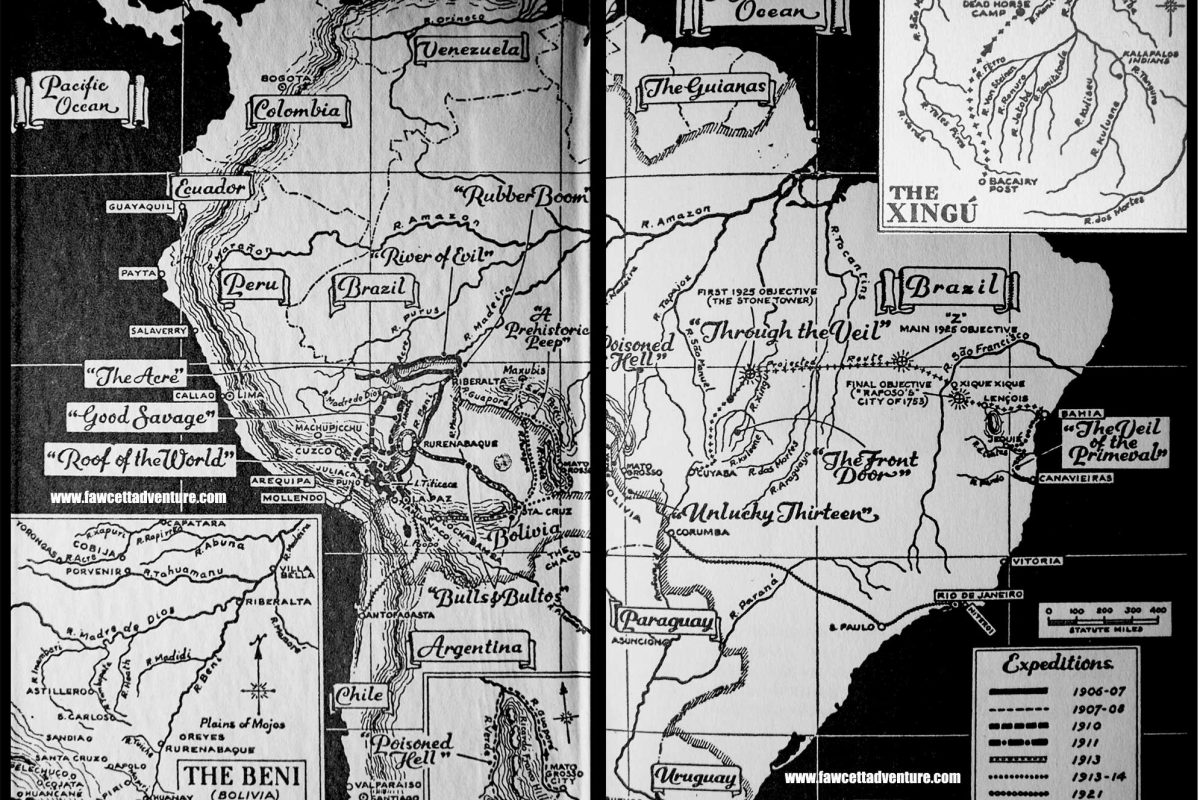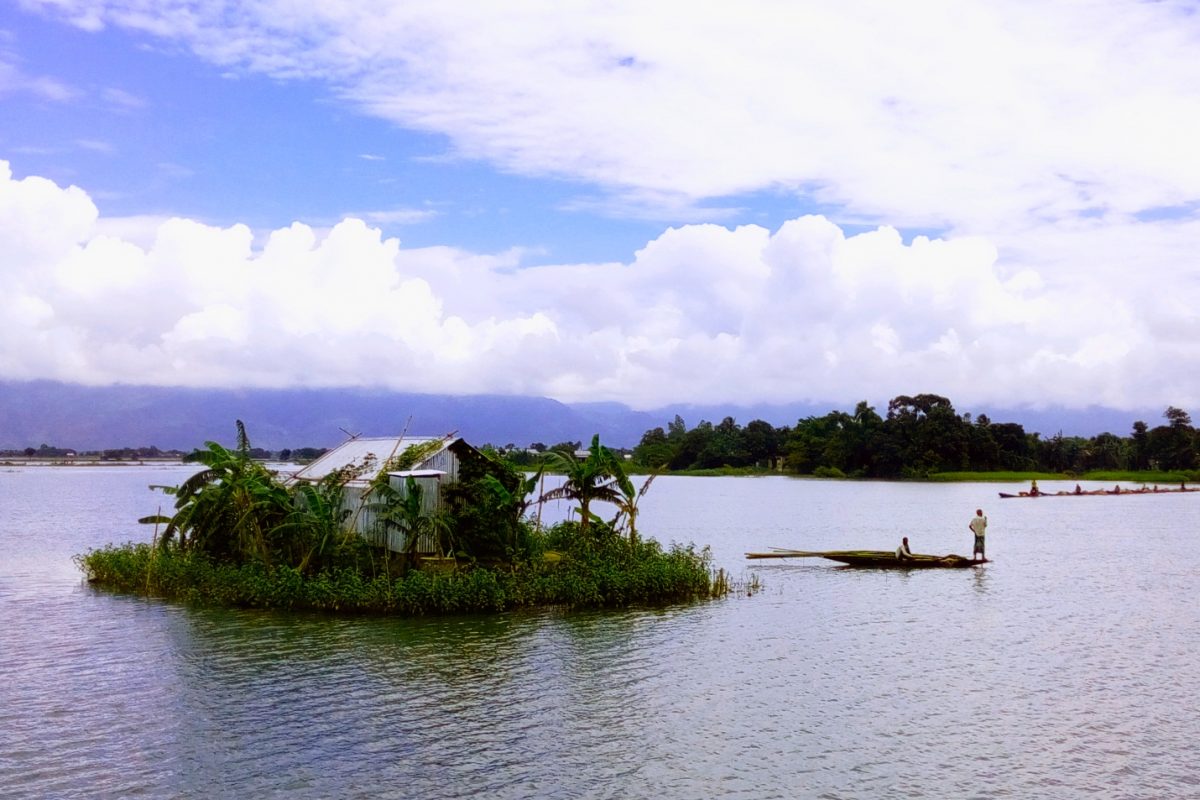Things To Do In Dhaka
Dhaka is the capital of Bangladesh, the residence of 16 million population and is exploding day by day. This four hundred years old city has a long story of enriched culture. But nowadays whenever we think about Dhaka what pops into our mind is an over populated metro city, roads full of vehicles and never ending traffic jam, which is very annoying indeed! But if we can consider it for a while, the city has lots to give you back in return. Some people believe that Dhaka is the paradise of the photography, having attainment of old and new architectural trends. It has many pleasing historical sites to visit which you shouldn’t miss while visiting Bangladesh. If you’re planning to spend a day or two in Dhaka, here is some things to do list for you.
Lalbagh Fort
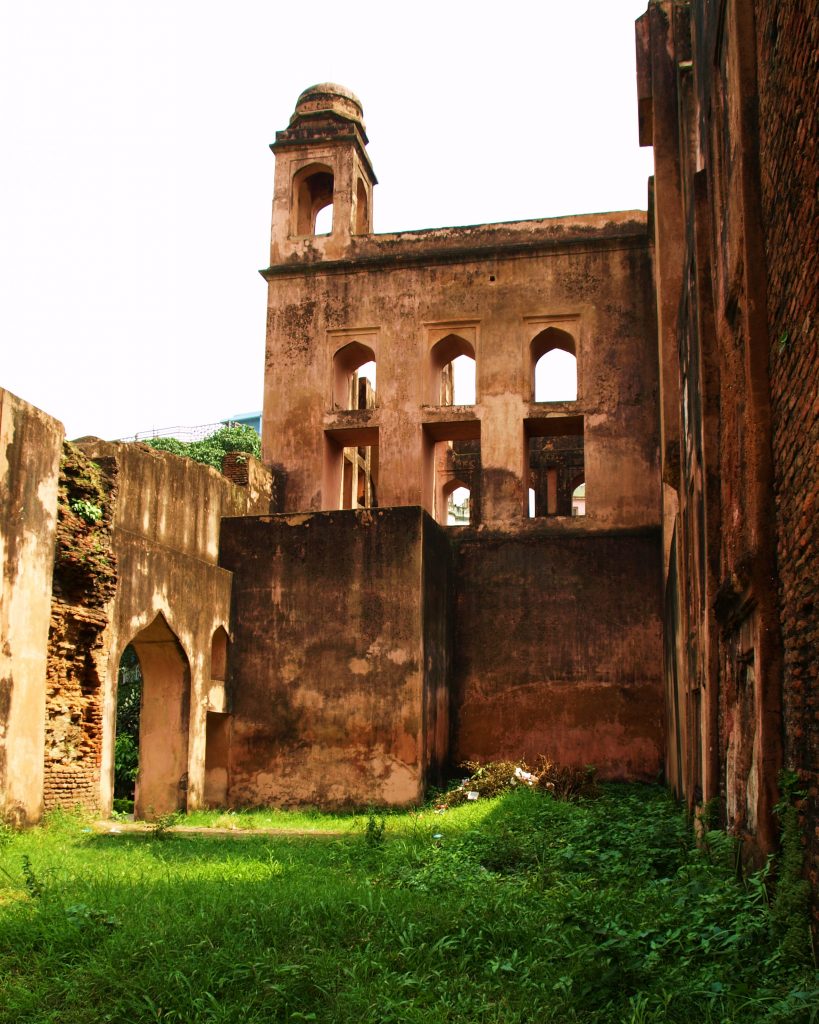
Lalbagh Fort Photographed by Shahnoor Habib Munmun
The Lalbag Fort is one of the most historic buildings in Bangladesh that reminds the time of the Mughal Empire. The construction started in 1678 AD by Mughal Subahdar Muhammad Azam Shah. After His time his successor Shaista Khan decided to not continue the work and its never been completed. It’s located in the old part Dhaka on a rich red soil.
Additional info:
The Lalbag Fort opens everyday except Sunday (local time):
Tuesday to Saturday: 10:00 am – 1:00 pm and 1:30pm – 6:00pm
Friday: 9.00 PM – 12.30 PM and 2:30pm – 6:00pm
Monday: 2:30pm – 6:00pm
Tuesday to Saturday: 9:00 am – 1:00 pm and 1:30pm – 5:00pm
Friday: 9.00 PM – 12.30 PM and 2:00pm – 5:00pm
Monday: 1:30pm – 5:00pm
The Ford will be closed at any govt. holidays. During Ramadan the closing time is 4:00pm and opening time remains as above.
Ahsan Manzil
This huge magnificent building complex was the official residential palace of the Dhaka Nawab Family also known as The Pink Palace. It’s located on the banks of the Buriganga River in Dhaka, the area named Kumartoli. The builder of this palace Nawab Abdul Gani was the richest landowner in the city at that time. It was built sometime in the middle of the 18th century. The open spacious stairway down to the massive green field gives stunning views from the front of the building.
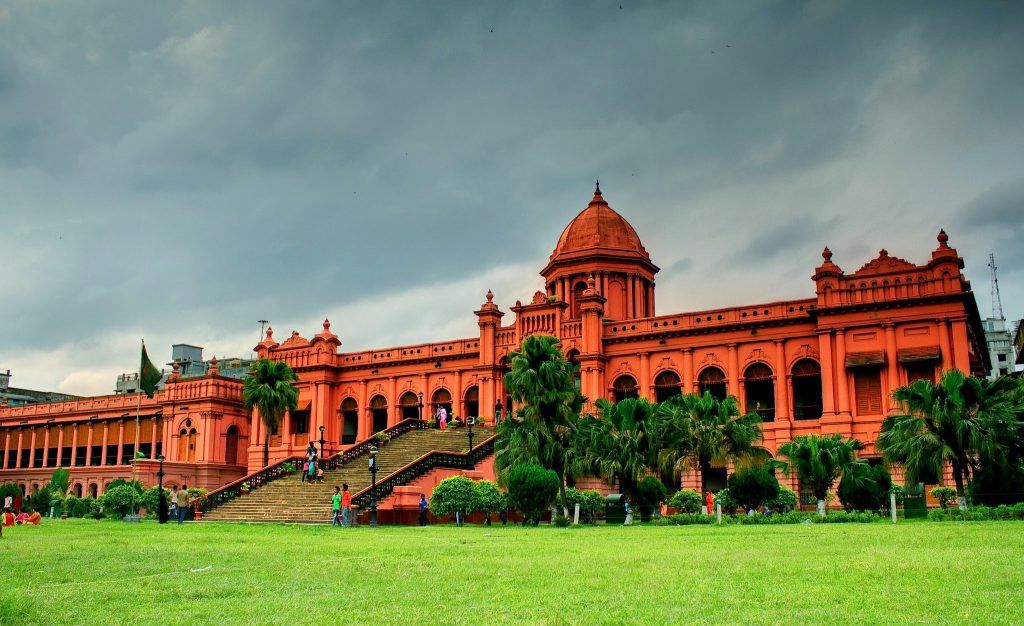
Ahsan Manzil
The glory has been lost long ago and gone through some renovation for the past few decades. Now it’s a national museum and exhibits some rare memories of the glory days. It contains 23 galleries exhibiting furniture, household articles, portraits and utensils used by the Nawab family.
Opens everyday except Sunday (local time):
April to September (Summer): 10:00 am – 5:00 pm
October to March (winter): 9:00 am – 4:30 pm
Friday (all the year): 3.00 PM – 7.00 PM
Ramadan: 9:30 am – 3:00 pm
Sadarghat River Port
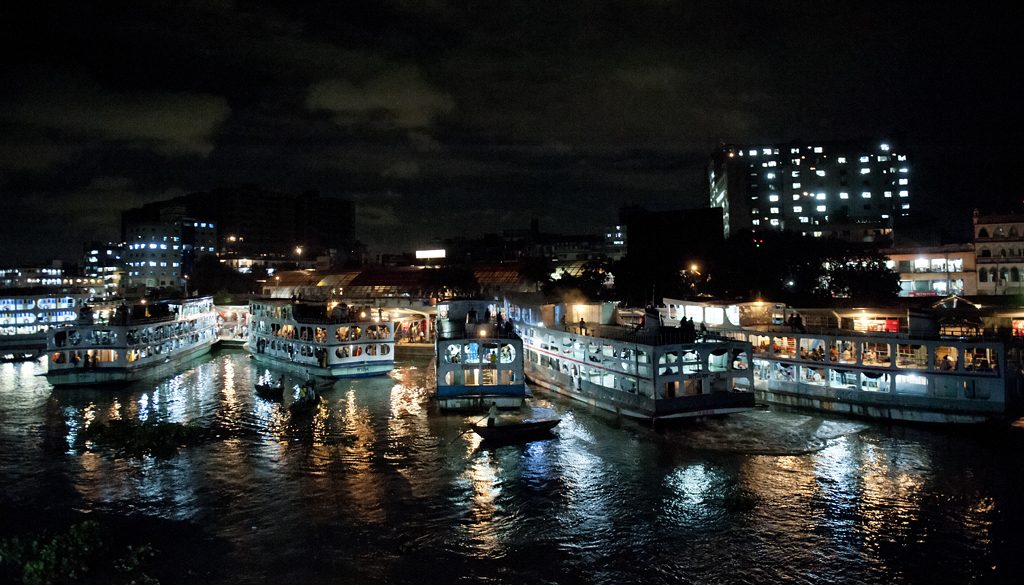
Sadarghat River Port Photographed by Brandon Wu
This place in truly insane! Always happening and running faster than time!! The most dynamic and the most crowdy place in Dhaka. The Sadarghat River Port is one of the largest river port in the world and the largest in the country. It is a transport hub that connects to the southern part of the country and more than a hundred thousand people use this post every single day. It’s located on the Buriganga river and very close to the Ahsan Manzil.
The best time to visit this place on the evening when all the ferries are departures from the terminal for an overnight journey to the southern part of Bangladesh.
Chowk bazaar
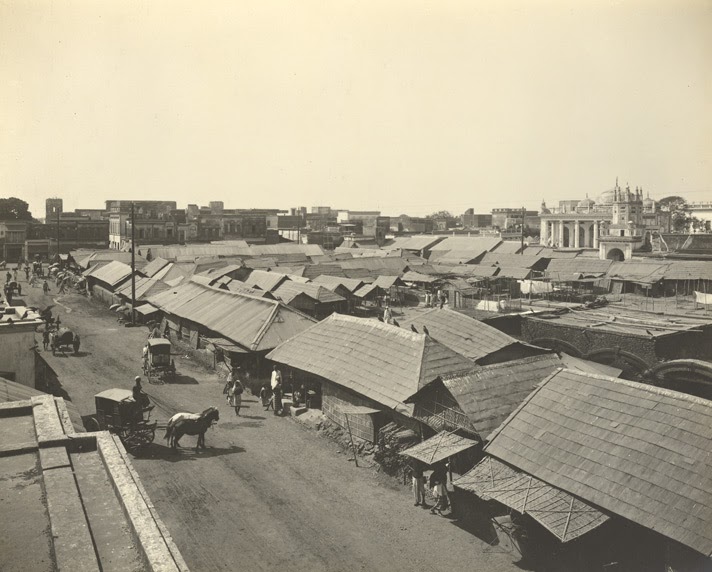
Chowk Bazar in 1904
Chowk Bazar is the business hub of Bangladesh, thousands of retailers from all over the country come here to get goods and supply. This is the central place of business for 400 years. There are lots of historical monuments near this area that still remind its old time and glory. This place located in the old Dhaka.
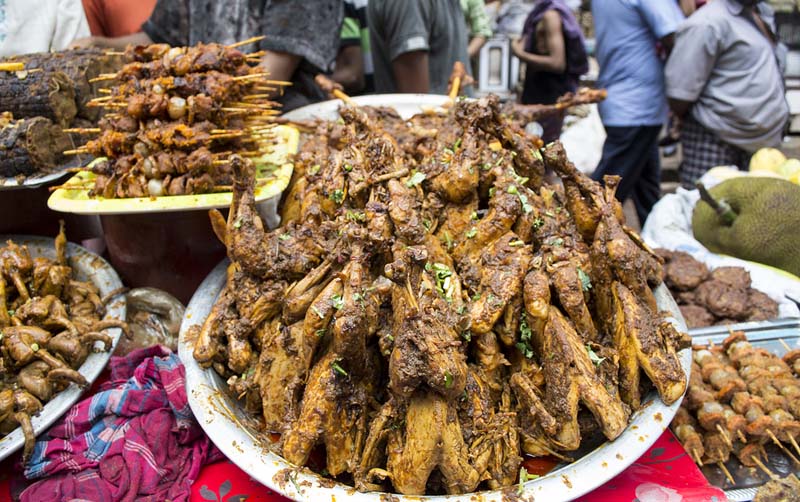
Iftar Bazar at chowk bazar. Photographed by Ashraf Uz Zaman
With the arrival of Ramadan, the main road of the age-old Chowk Bazar turns into the iftar hub in the city, bringing in food lovers from all over the capital with its offering of Ramadan-special delicacies. Some of the regular Iftar items names Suti Kabab, Mutton Kabab, Fried Pigeon, Shahi Halim, Shahi Jilapi, doi bora etc. Most of the foods are spicy and curries but they offer some sweets also.
Star Mosque
It’s one of the most visited tourist attractions situated in the old past of Dhaka, the area named Armanitola. The name star mosque because of the elegant design decorated with a mosaic blue star on the wall, ceiling and the star-shaped pool in front of the mosque. Mirza Golam Pir built this mosque in the 19th century.

Star Mosque Old Town Dhaka Photographed by Shameem Bakhshi
This is a religious and holy place and many Muslims come here for their prayers 5 times a day. Though, this place is open to visit for all but please avoid the prayer time.
IMPORTANT: You must wear long pants and keep your shoes outside when entering the mosque. Women should bring a head scarf and cover their hair.
Khan Mohammad Mridha Mosque
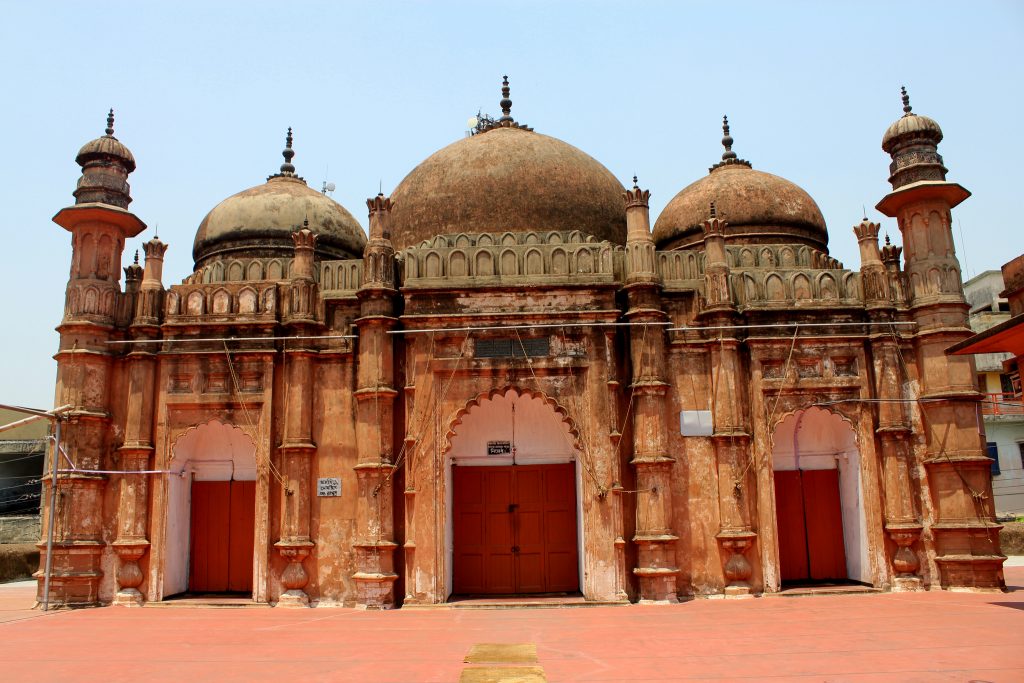
Khan Mohammad Mridha Mosque Photographed by Md. Abdul Khaleque
It is another archaic mosque, which resembles Lalbagh Fort in style and less than half a kilometer west of the Lalbagh Fort. It was built in 1704 and have plenty of spaces around it. It has Three squat domes, with pointed minarets at each corner, leading the rectangular roof. People come here for praying. Visitors are allowed other than prayer time. On the eastern side, there are tombs with no epigraph. So it’s hard to find out whose tomb is this.
Dhakeshwari Temple

Dhakeshwari Temple Photographed by Ragib Hasan
The Dhakeshwari temple is the center of Hindu religion lives in Dhaka. It’s located near Bakshi Bazar at Dhakeshwari Road near the Lalbagh Fort. The word Dhakeshwari denotes Goddess of Dhaka. This famous and attractive heritage place is a state-owned Hindu Temple in Dhaka. It has built by Ballal Sen at the 12th century and now is the center place of socio-cultural as well as religious activities of Hindus. Each year, the largest celebration of Durga Puja is held at the National Temple.
It’s open every day. People from all religion can visit the temple. The best time to visit this place during the Durga Puja. Please don’t touch any worshipers or any other belongings especially food.
Parliament building of Bangladesh
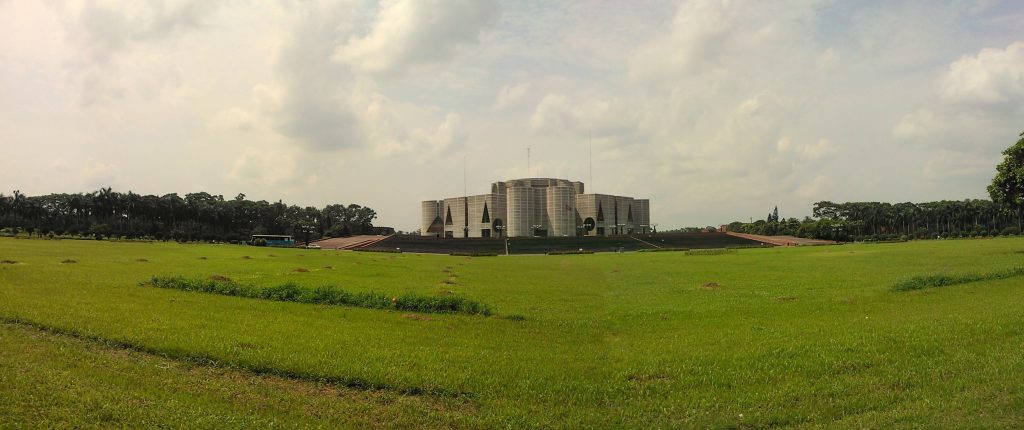
Panorama of National Assembly of Bangladesh. Photographed by Nahid Sultan
Jatiyo Sangsad Bhaban, the Parliament building of Bangladesh is an architectural masterpiece designed by Louis I. Kahn, an American architect. It’s located at Sher-e-Bangla Nagar, Dhaka. Its construction started in 1964 and held on 1971, after the liberation war of Bangladesh the construction started again and completed in 1982. The entire building surrounded by an artificial lake from three sides, that gives it stunning views and breathtaking feeling.
It’s architectural and physical design gives a sense of modernism. Geometrical windows grant natural light in the form of circles, triangles and rectangles. The Jatiyo Sangsad Bhaban is one of the finest architectural buildings of the twentieth century. This building was featured in the film My Architect in 2003.
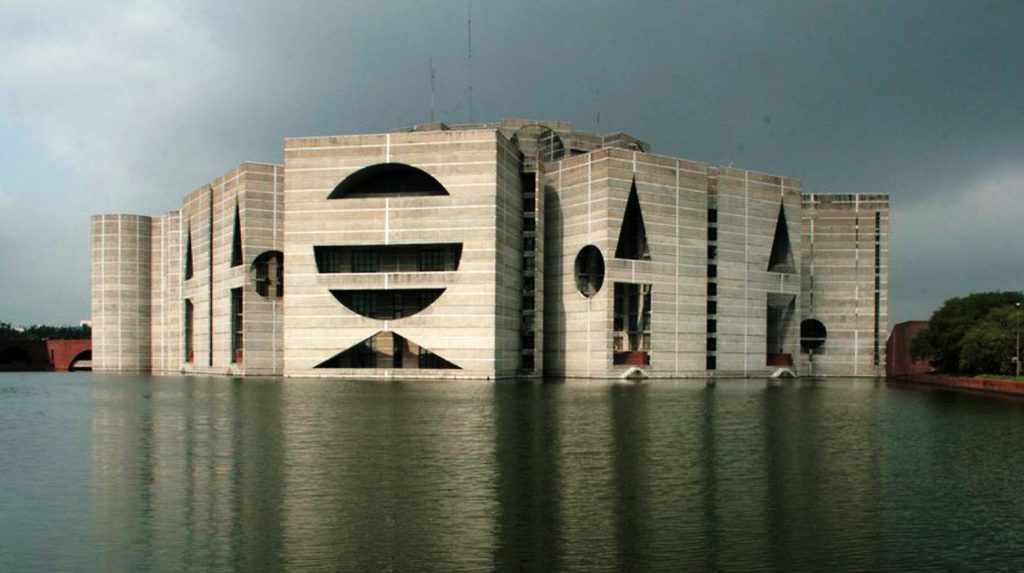
Lake Side View of National Assembly of Bangladesh
Visitors are not allowed inside the building and need strict permission to go inside, but the outside view is also great, you can see the uniqueness of the great architecture. You can have a good view from the Lake Road where reflection on surrounding moat is guaranteed.
National Museum
It is considered as one of the largest museums in South Asia. It’s located at the center of the Dhaka city near the Dhaka University at Shahbag square. This hundred years old National museum has four storied building. All exhibits are grouped in four different departments:-
- Natural History.
- Ethnography and Decorative art.
- History and classical Art.
- Contemporary.
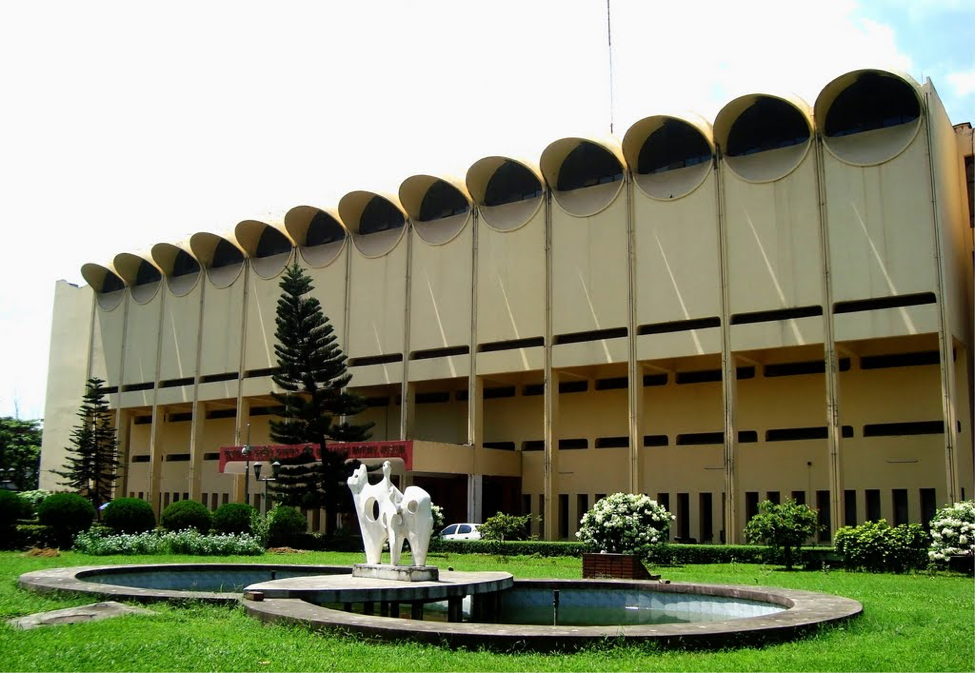
National Museum Dhaka
It has the collections like sculptures and paintings of the Muslim, Buddhist, and Hindu period. This museum is extremely rich in metal, stone, wooden sculptures, artifacts, terracotta, gold, silver, copper coins etc. The museum has its own library with thousands of books.
Opens everyday except Sunday (local time):
April to September (Summer): 10:30 am – 5:30 pm
October to March (winter): 10:00 am – 4:30 pm
Friday (all the year): 15.00 PM – 8.00 PM
Ramadan: 9:30 am – 3:00 pm
Liberation War Museum
This is the liberation war museum exhibits the sign of the price they paid to get the freedom. The museum is located at Segun Bagicha area of the city. There are six galleries here consisting rare photographs of liberation War and artifacts handled by soldiers during the war. It upholds significant memories and saves the legacy of the freedom fighters.
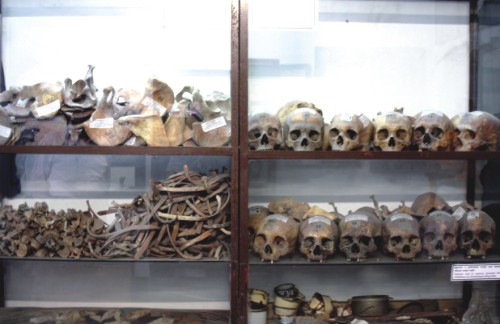
The Liberation War Museum
Opens everyday except Sunday (local time):
April to September (Summer): 10:00 am – 6:00 pm
October to March (winter): 10:00 am – 5:00 pm
Hatir Jheel
It was inaugurated in 2013. Hatir jheel proudly represents the development of modern Bangladesh. When the Dhaka city was getting extremely suffocated, it came as a breath of fresh air. It’s a blending of a lake, park and bridges. It’s become a very important part of the city communication. The area is like an urban oasis, the best drive in Dhaka. Most probably this is the only roads in the Dhaka where you don’t have to stack on traffic jam.
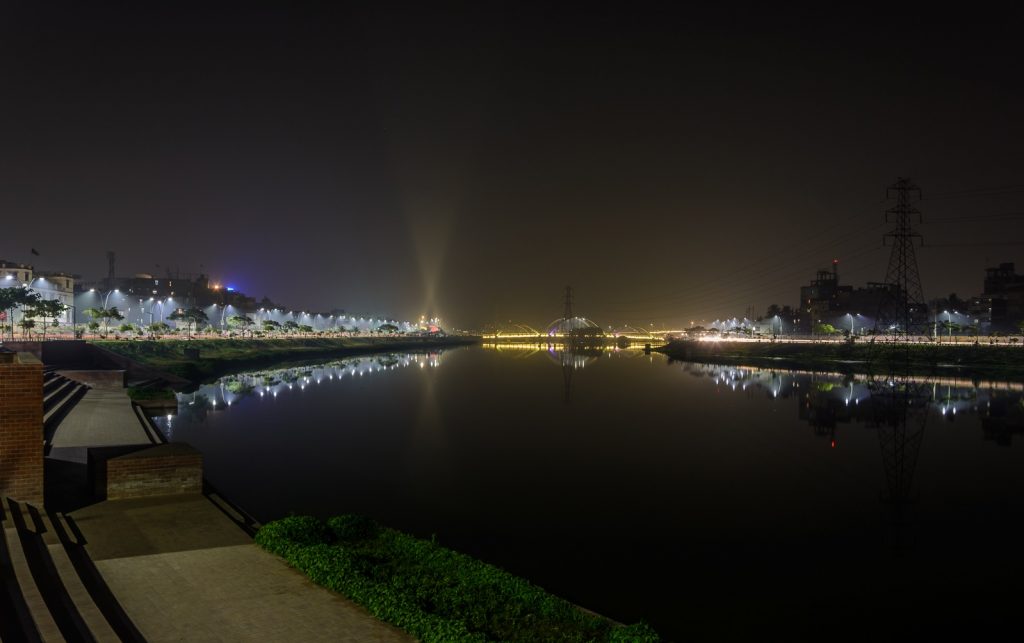
Hatirjheel at Night Photographed by Francis Mridha
On the night, the view is stunning. During the weekend and public holiday, people gather here to spend some quality time with friends and family. Sometimes it goes too crowdy that’ll give you a festive feel.
Sonargaon

Sonargaon. Photographed by Muhibul Islam Sabab
Though the Sonargaon is not in the Dhaka city, but not so far from the capital. It was the old capital of Bengal established in the 13th century. This ancient place has gone through lots of historical events and now only has some sign of its time.
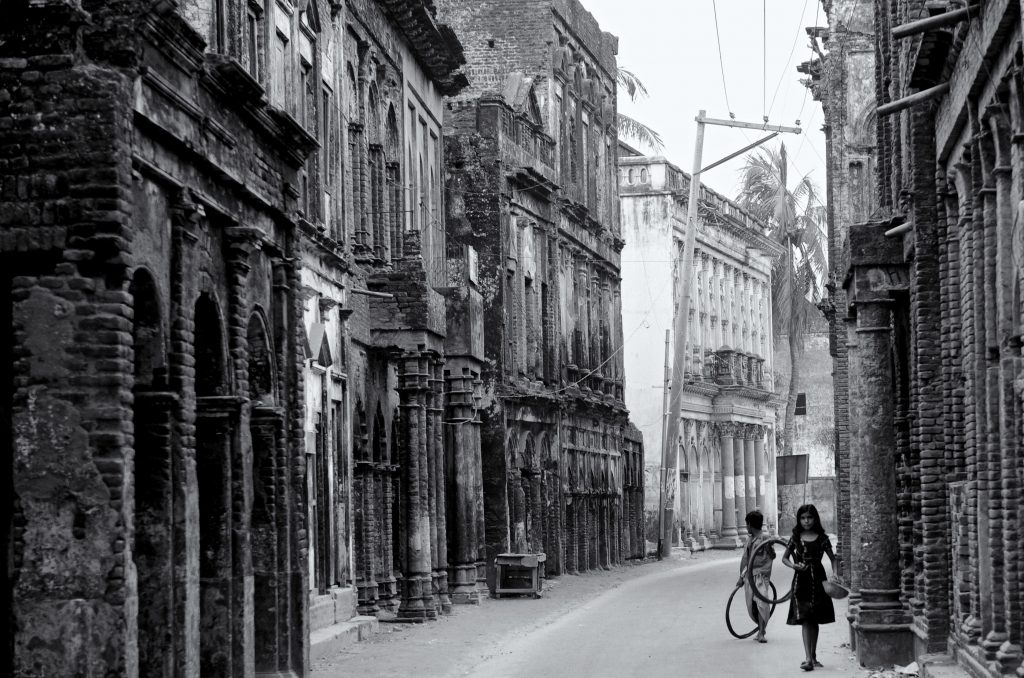
The Panam City. Photographed by Peter Anderson
There is museum name Lok Shilpa Jadughar (Folk Art and Craft Museum) and a very old abundant town road known as “The City of Panam” or just Panam City. The Panam City was established during British rule in the 19th century by Hindu cloth merchants.
Events and Festivals
Lots of cultural and religious festivals going on around the year. Pahela Boishakh, Pohela Falgun, Eid ul-Fitr, Eid ul-Adha, Ashura, Holi, Durga Puja, Shakrain are the biggest festivals of Bangladesh. The Language Movement Day, Independence Day, Victory Day of Bangladesh are the biggest historical events.
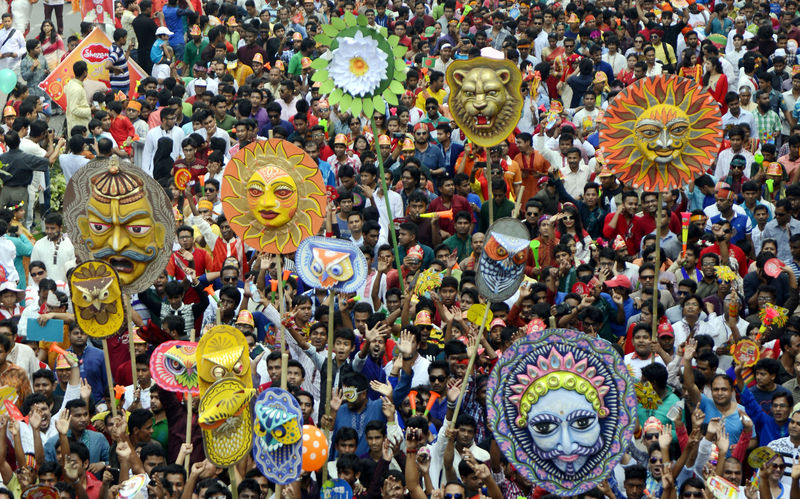
Pahela Baishakh Rally. Photographed by Demotix
Pahela Boishak is the starting day of Bengali calendar and one of the most popular festivals id Bangladesh. At the day of Pahela Boishak and Pohela Falgun people hang out wearing colorful dresses to celebrate the day with friends and family.
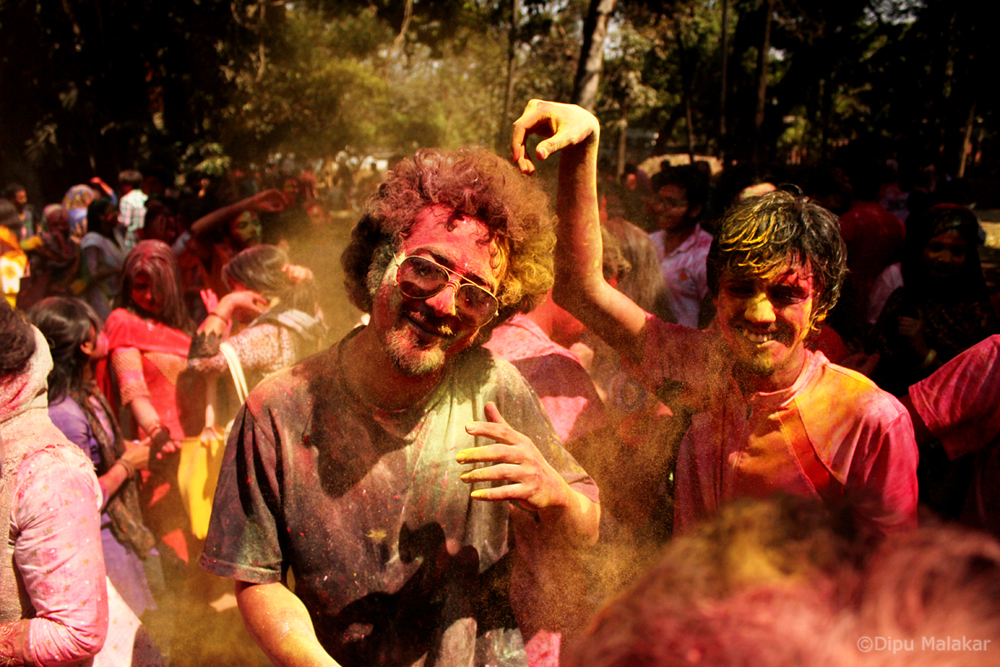
Holi at Dhaka Photographed by Dipu Malakar
Holi came from Hindus, but accepted by the all religious people. During this day the Dhaka city literally becomes colorful. You can find young people covered with colors.
To remember the sacrifices for the mother language, The Bangla Academy arrange a month-long Book fair starts at 1st February till the end of the month every year. The day 21st February reminds the martyr of the fighters for our mother tongue. This is the gathering place for the book lovers.


